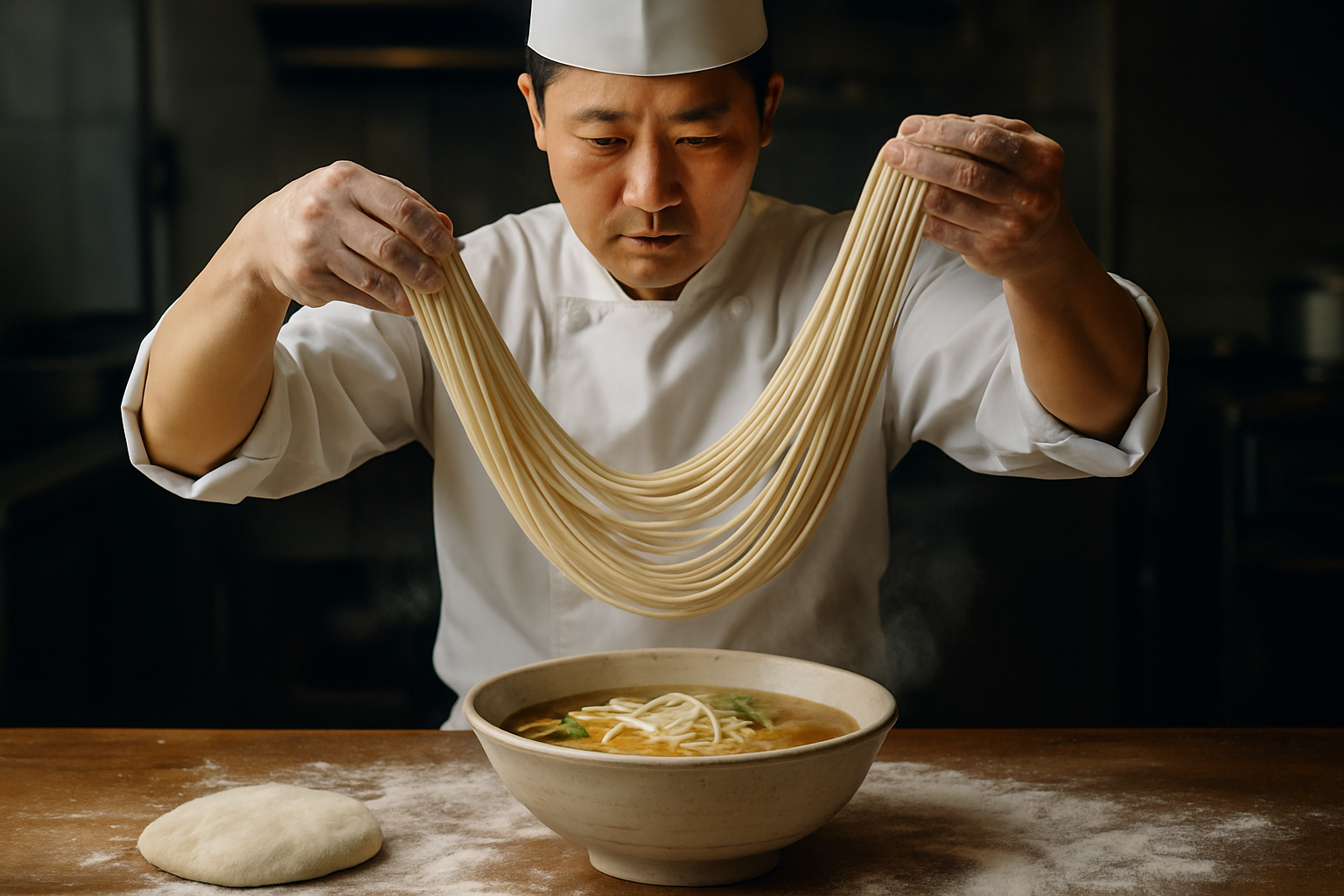Noodle Pulling: The Artistry of Hand-Pulled Noodles
Slurping up a bowl of hand-pulled noodles is like tasting a piece of culinary history. This ancient technique, perfected over centuries, transforms simple ingredients into strands of chewy perfection. From street corners in Xi'an to trendy noodle bars worldwide, the mesmerizing dance of noodle pulling continues to captivate food lovers. Let's dive into the fascinating world of this time-honored craft and discover why it's making waves in modern gastronomy.

The Art of Noodle Pulling
At its core, noodle pulling is a feat of both skill and showmanship. The process begins with a simple dough made from wheat flour, water, and salt. The magic happens when the chef starts to stretch and fold the dough, using a rhythmic series of pulls and twists. With each movement, the dough is elongated and doubled, creating thin, uniform strands. The most skilled noodle pullers can transform a single piece of dough into hundreds of noodles in mere minutes, their hands moving in a blur of practiced precision. This technique not only creates noodles with a unique texture but also provides an entertaining spectacle for diners.
The Science Behind the Stretch
The elasticity that allows for noodle pulling is all thanks to gluten, the protein found in wheat flour. When the dough is kneaded and stretched, gluten molecules form long, interconnected chains, giving the dough its characteristic springiness. The repeated pulling aligns these gluten strands, resulting in noodles with a distinctive chewy texture. The protein content of the flour, hydration level of the dough, and even the mineral content of the water used can all affect the final product. Understanding these factors is crucial for noodle masters to consistently create the perfect strand.
Regional Variations and Flavors
While the basic technique of noodle pulling remains the same, different regions have put their own spin on this culinary art. In Lanzhou, famous for its beef noodle soup, the noodles are typically thinner and served in a clear, flavorful broth. Xi’an’s biang biang noodles, on the other hand, are wide and flat, often dressed with chili oil and vinegar. In Japan, ramen shops have adopted the technique to create tsukemen, thick noodles served separately from the broth for dipping. Each variation showcases the versatility of hand-pulled noodles and how they can be adapted to suit different flavor profiles and dining experiences.
The Modern Revival of an Ancient Art
In recent years, there’s been a resurgence of interest in hand-pulled noodles, with chefs and food enthusiasts alike rediscovering the craft. Modern noodle bars are popping up in cities worldwide, often featuring open kitchens where diners can watch the noodle-pulling process. This transparency not only adds to the dining experience but also highlights the skill and artistry involved. Some innovative chefs are even experimenting with non-traditional ingredients like beetroot or spinach to create colorful, Instagram-worthy noodles that taste as good as they look.
Noodle Pulling Tips & Facts
• The ideal dough temperature for noodle pulling is around 25°C (77°F).
• A single piece of dough can be stretched into over 16,000 noodle strands.
• The world record for hand-pulled noodles is 16,000 noodles in 17 minutes.
• Alkaline water is often used to give the noodles a springier texture.
• Noodle pulling requires significant upper body strength and endurance.
• Some master noodle pullers can create noodles as thin as a human hair.
As we’ve explored the fascinating world of hand-pulled noodles, it’s clear that this ancient technique is more than just a way to prepare food. It’s a testament to human ingenuity, a celebration of cultural heritage, and a form of edible art. Whether you’re slurping up a bowl of la mian in a bustling Chinese market or watching a skilled chef perform their noodle-pulling dance in a modern restaurant, remember that you’re experiencing a piece of living history. So the next time you encounter hand-pulled noodles, take a moment to appreciate the craft, skill, and tradition behind each delicious strand.




